CREATURE FROM THE BLACK LAGOON (1954)
A group of scientists try to capture a strange prehistoric beast lurking in the depths of the Amazonian jungle.
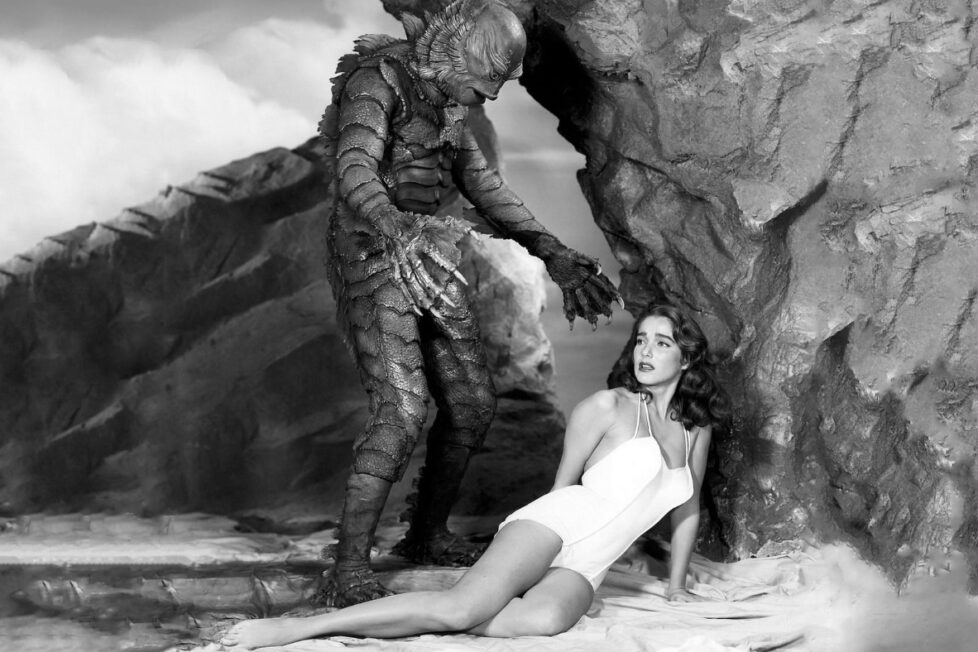
A group of scientists try to capture a strange prehistoric beast lurking in the depths of the Amazonian jungle.


EXT. COSMIC DUST - (NEBULAR) A low rumble is heard... as though thunder growing and growing, then an explosion rocking the screen, as the nebulae bursts into pieces and flies directly into camera.
Our world’s filmed beginning arrived at a time when humanity feared its end. This stunning macro photography isn’t from Christopher Nolan’s latest epic, but the chilling opening of Creature from the Black Lagoon. In 1954, as J. Robert Oppenheimer grappled with the post-nuclear future, this film presented an ancient being enduring the same devastation wrought by progress. An unforgettable creature heralded the end of another universe: Universal’s classic monsters. Seven decades later, both Oppenheimer and the Creature remain potent figures, prompting ongoing contemplation of our place in the world.
Universal had experimented in the horror genre before, but Dracula (1931) forged the studio into a full-fledged horror factory. Over 40 monster movies thrilled cinemagoers in two decades, with iconic figures launching franchises and sparking revolutionary crossovers. Between Frankenstein Meets the Wolf Man (1943) and Abbott and Costello Meet Frankenstein (1948), however, Universal had bled every last drop from its catalogue. Audiences were tired and desensitised. The old world of superstition was on the out; people no longer explored dusty, old houses but pondered the vast, dark universe above. The thrills and terrors of real science were captivating the masses and thus science fiction dominated cinema. However, Creature from the Black Lagoon followed marine biologists venturing into the Amazon’s dark corners to awaken a dormant threat from our ancient nature.
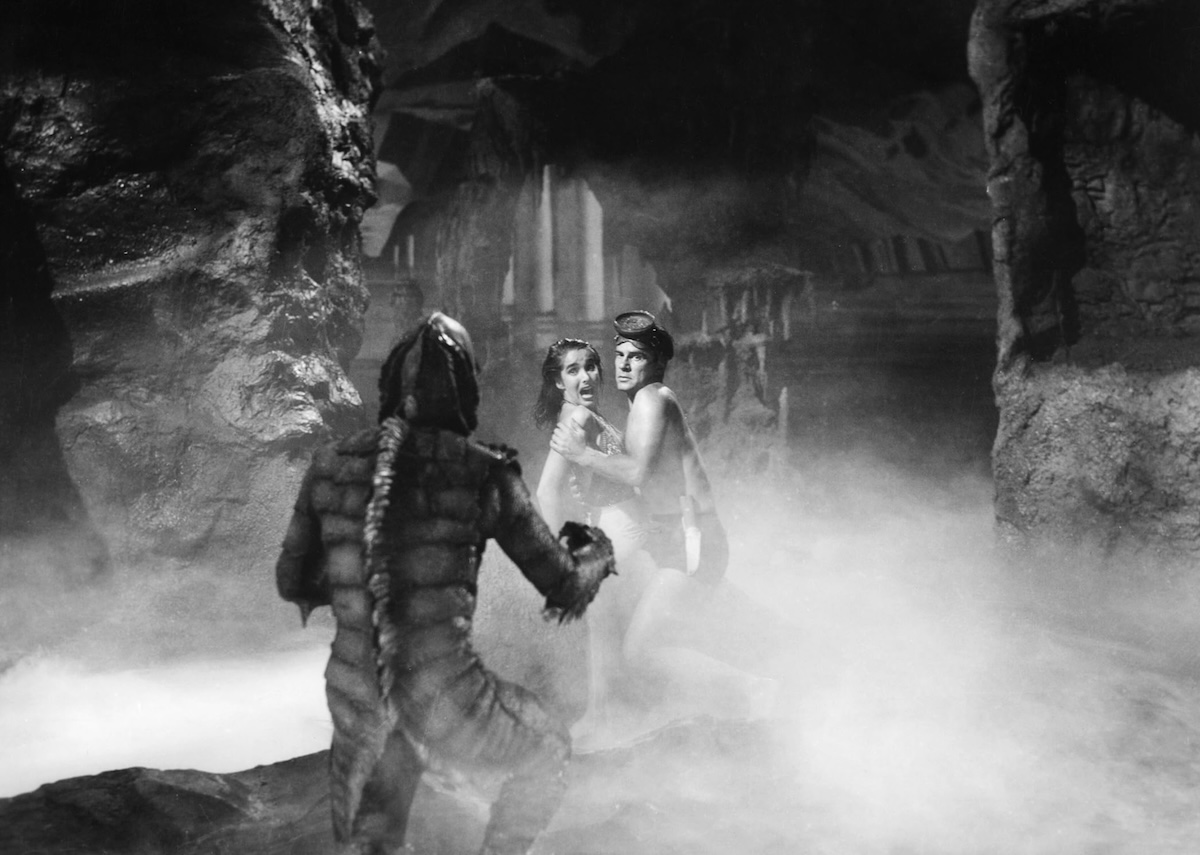
Unlike the crazed scientists of Frankenstein (1931) or The Invisible Man (1933), this expedition embodies rational geology and well-meaning curiosity. Led by Dr Carl Maia (Antonio Moreno), Dr David Reed (Richard Carlson) and Kay Lawrence (Julie Adams) engage in discussions about the natural wonders of lungfish evolution and its potential lessons for humanity’s adaptation to the strange unknowns of space. However, their extraordinary discovery of a fossilized webbed hand, a potential missing link between aquatic and surface life, is interrupted when this evolutionary ancestor might still have a living descendant.
The mythic protector of the Black Lagoon swam into a fascinating real-life encounter. During a 1941 dinner party for the filming of Citizen Kane, an enchanted producer, William Alland, heard a passionate tale of a half-human, half-fish creature. He was partially sold by cinematographer Gabriel Figueroa’s promise of photo evidence of the beast in his possession. A decade later, Alland, shifting from Westerns to the sci-fi zeitgeist, made It Came from Outer Space (1953). This production assembled the creative team for his next project, The Sea Monster. This Beauty and the Beast-inspired treatment imagined an amphibious King Kong (1933) dragged from the jungle to rampage across the city. The writers of Outer Space, Harry Essex and Arthur Ross, developed Creature from the Black Lagoon with the same director, Jack Arnold.
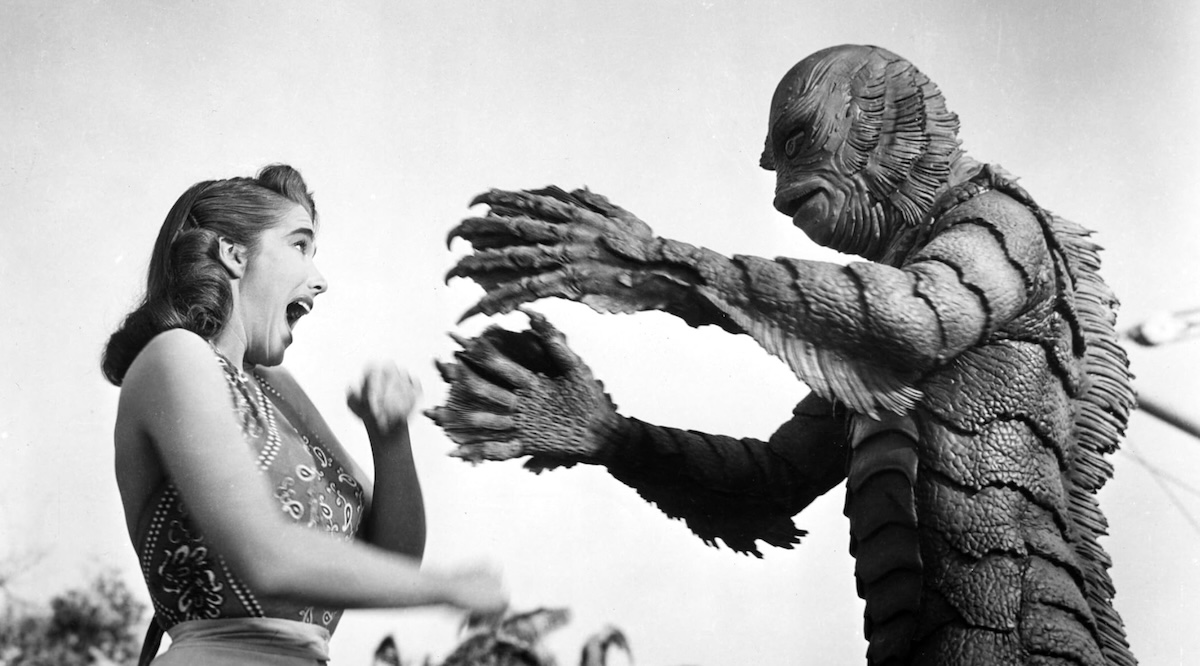
Matt Zoller Seitz, in his retrospective, imbued the film with contextual significance by referencing the Brown vs. Board of Education, the Civil Rights movements, and the “bitter isolationist aftertaste of two world wars and the Korean conflict.” Even “the racist fear of miscegenation encoded in the relentless threat of inter-species sex” finds parallels in the remote European menace of Count Dracula or The Wolf Man’s Romani fortune teller (both portrayed by Hungarian actor Bela Lugosi). While mutually assured destruction threatens, the innate drive of manifest destiny compels exploration and colonization, even with supposedly good intentions. Though Kay suggests “Whatever the species may be, if you leave it alone it won’t bother you,” this platitude is overruled by the film’s true villain, Dr Mark Williams (Richard Denning), who promises extinction to any lesser lifeform that threatens humanity’s God-given right for progress.
Williams, accused of resembling a trophy hunter more than a scientist, is ridiculed by the others. “We didn’t come here to fight monsters,” they argue, “we came here to find fossils.” However, their rational desire to leave comes too late. Having previously provoked the Creature, their escape route from the lagoon is now blocked. Though animalistic, the Creature appears intelligent enough to have trapped them in retaliation. Just like another Frankenstein’s Monster, man’s inhumanity has cruelly twisted this incredible scientific discovery.
While William serves as a decent foil, the human characters pale in comparison to the likes of Van Helsing (Edward Van Sloan), Larry Talbot (Lon Chaney Jr.), or Dr Pretorius (Ernest Thesiger). But Julie Adams shines as both the love interest for Carlson and a counterpoint to the Creature. Her iconic beauty in a luminescent white bathing suit casts her in an angelic light, further emphasising the contrast with the murky depths below. She even sports a touch of dirt on her face, seamlessly blending with the geologist group. However, her primary function often boils down to turning around and discovering the Creature creeping up behind them—a pantomime repeated a commendable four times.
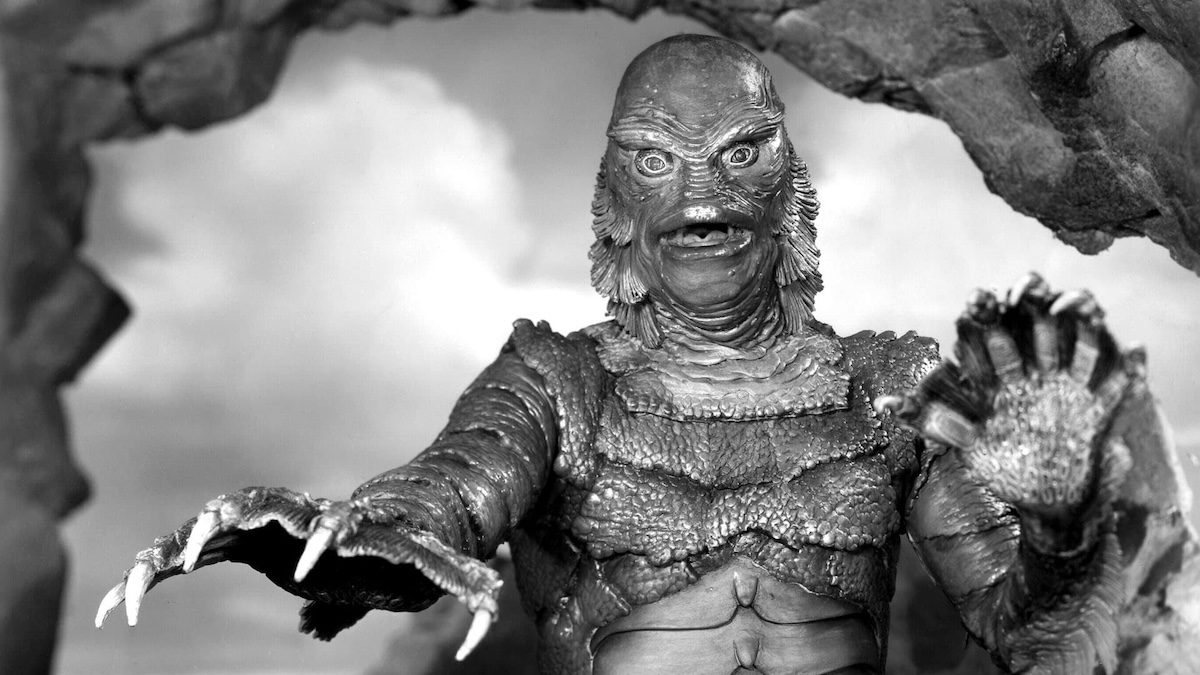
Kay’s journey through those waters is easily the most transcendent sequence in the entire film. Enthralled by the underwater choreography, I had to confirm my suspicions. This masterpiece was the sole work of actress, model, and stuntwoman Ginger Stanley, a mermaid at the Weeki Wachee Springs amusement park in Florida. Tragically, she remained uncredited for every performance throughout her career. This wasn’t some simple stunt involving punches or falls. The entire sequence, showcasing their synchronized swimming, unites two worlds in perfect harmony. It’s a moment where beauty and beast speak a universal language. Sadly, she wouldn’t be the only talent whose brilliance went hidden, much like the elusive beast.
The underwater sequences, masterfully shot by cinematographer William E. Snyder, stand in stark contrast to the more conventional direction by Jack Arnold. While the two collaborated on every frame, a night-and-day difference manifests between the captivating fluidity of the swimming scenes and the almost theatrical rigidity of the dialogue-driven ones. Despite the lush set decorator’s efforts, Arnold’s direction of the cast often falls flat, venturing into stagey territory. The film spends an inordinate amount of time on the boat, with the cast statically positioned in a near-linear formation facing the audience.
The monochromatic 35mm cinematography remains remarkably beautiful, especially in night-time scenes where the Creature stands stark against the darkness. The film’s climax within the Creature’s cavernous lair with the breathtaking light reflections off the water underlighting the cast is a bright spot in an otherwise ordinary production. Concluding the Universal horror era, it pales in comparison to the exuberant directorial visions of Tod Browning and James Whale.
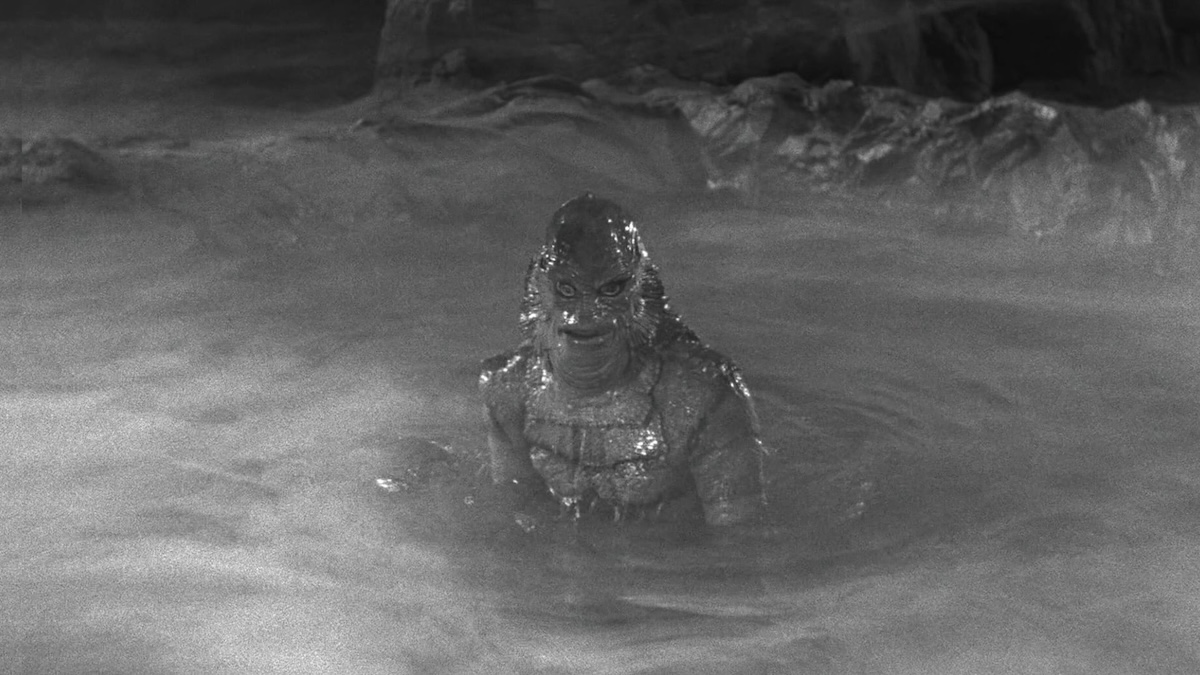
Concluding with a remarkable feat, the Creature hoisting Richard Carlson high above its head. While the explicit violence may not surpass gore levels seen in previous Universal films, the raw animalism on display makes The Wolf Man seem tame in comparison.
Black Lagoon wastes no time, launching straight into the action as the Creature slaughters two unseen crew members, its horrific pig-like squeals echoing through the water. Their gruesome wounds leave little doubt about the culprit: “Jaguar claws,” one witness exclaims, “they rip like this!” Later, the Creature savagely mauls a cast member’s face, leaving him with a head swathed entirely in bandages from the brutal attack.
This ferocity stands in stark contrast to the Creature’s peaceful and seemingly content demeanour when relaxing in its element.
The duality of beauty and beast embodied in the dynamic performance of the Creature is a testament to the two separate actors who wouldn’t meet until 20 years later. Ben Chapman shouldered the burden of portraying the majority of the Creature. Enduring 14-hour days frequently drenched to cool his overheating suit, which restricted even the ability to sit, contributed to his portrayal of a suitably aggressive and agitated Creature. This is further evidenced by the genuine bestial threat present when the Creature tests his cage’s strength and breaks free, not all his movements entirely controlled. His limited vision due to the restrictive headpiece even resulted in an accidental scrape of Adams’ head against the set cave wall while he carried her.
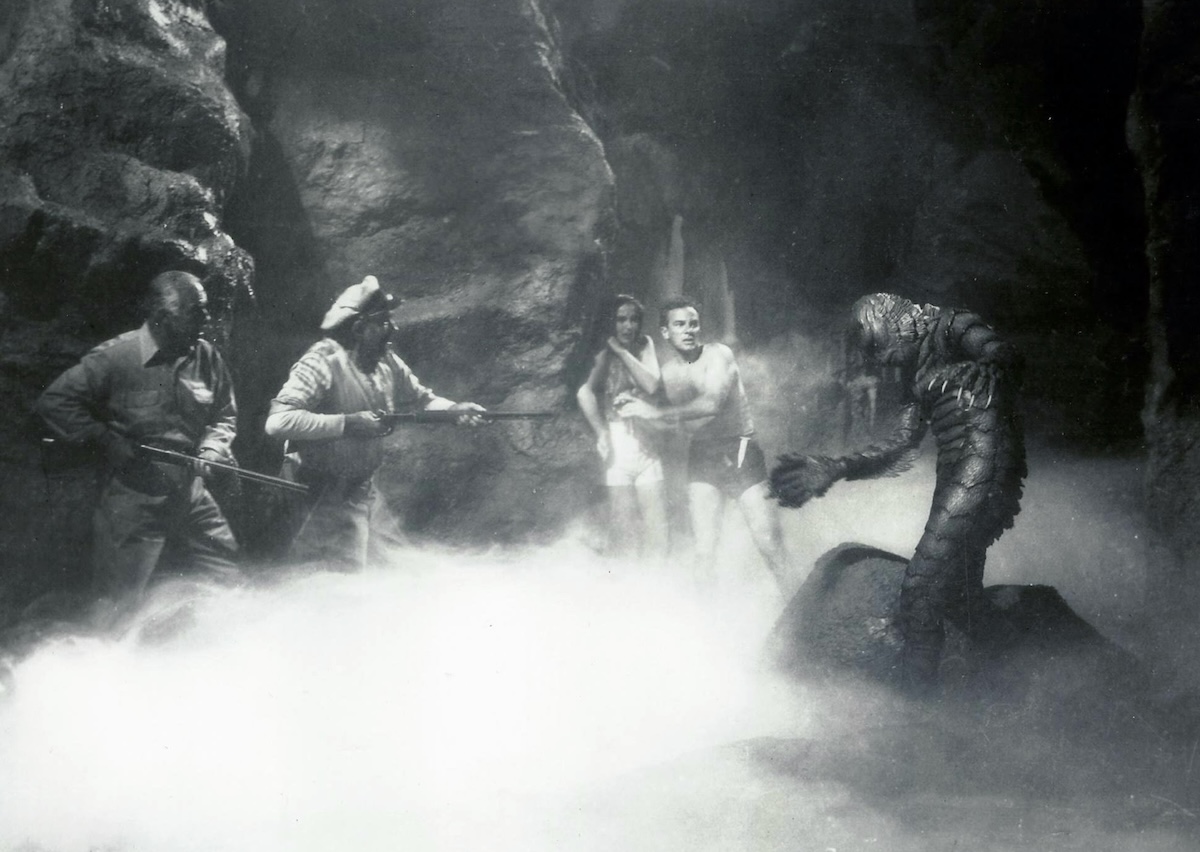
Ricou Browning, who performed the underwater sequences, recalled the suit as “cumbersome at first. It seemed awkward and clumsy, but once I got into the movie, I forgot I had it on. I became the Creature.” He wasn’t just comfortable enough to swim around in it; he was famed for holding his breath for up to four minutes at a time. However, he remained humble: “If you’re not doing anything at all, four minutes is possible. But if you’re swimming fast or fighting, you use up a lot of oxygen, and it cuts it down to, at most, two minutes.”
The bodysuit was crafted by Jack Kevan while Chris Mueller Jr. sculpted the head. The Creature’s designer was former Disney animator Milicent Patrick, notable as the first woman to work in special effects and makeup. Make-up artist Bud Westmore initially approached Mueller Jr. for the film, but he recalled Patrick’s work designing the aliens from It Came from Outer Space. After $12,000 was spent on the Creature, including the engine-powered tail that was ultimately removed, Patrick was asked in Famous Monsters of Filmland (1978) for her thoughts on the outcome. She replied, “The shape he finally wound up in I think is cute. But that’s because I worked on him so long. He was supposed to scare most everybody else.”
Universal, confident in the results, sent Patrick on “The Beauty Who Created the Beast” press tour. However, the title swiftly changed to “The Beauty Who Lives With the Beast.” Upon returning to Los Angeles, Patrick discovered she no longer worked at Universal Studios. Westmore, now credited as the sole designer, had changed the tour name and orchestrated her dismissal. This deceptive tactic remained effective for over 50 years, continuing even after their deaths. Thanks largely to research from Mallory O’Meara’s 2019 book The Lady From the Black Lagoon, Patrick’s achievements were finally substantiated. Following this ordeal, Patrick swore off ever working on another film production.
What became of the Creature costume itself? After the two sequels, Revenge of the Creature (1955) and The Creature Walks Among Us (1956), Universal discarded it. Forrest J. Ackerman, a writer for Famous Monsters of Filmland, acquired it from a janitor who saved it from a Universal lot dumpster, thinking it would make a good Halloween costume for his son.
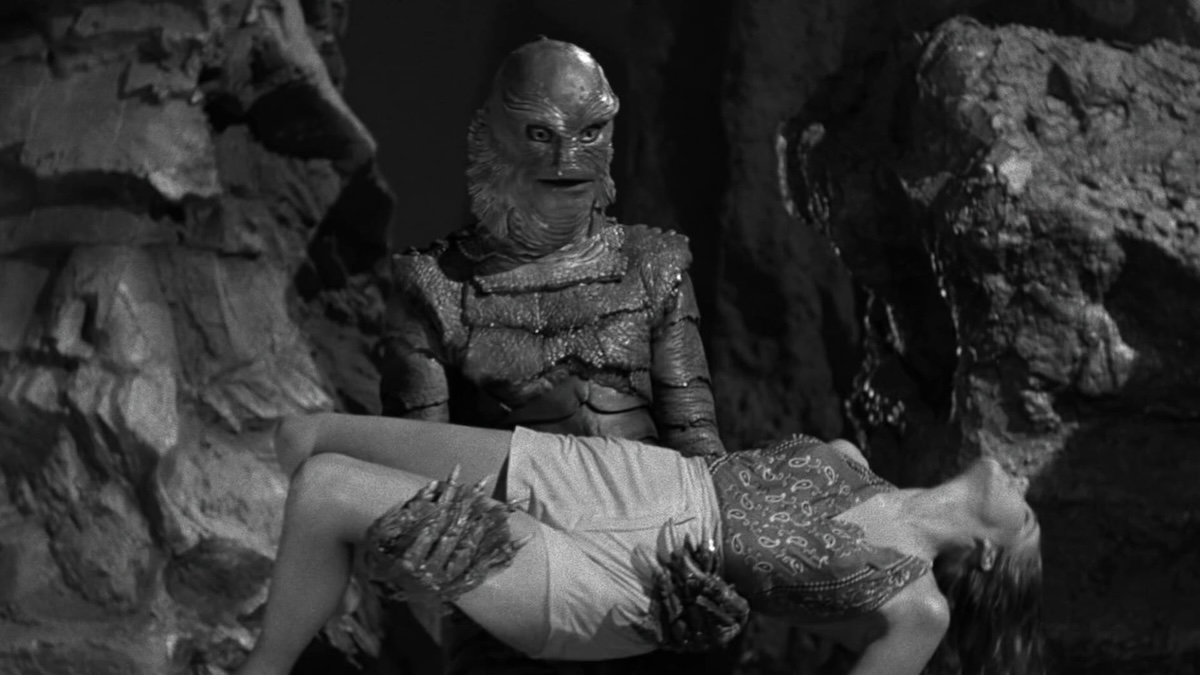
Hammer Film Productions, for all its success in reviving Dracula, Frankenstein, and the Mummy during the 1950s and 1960s, left one classic monster untouched: the Creature from the Black Lagoon. Unlike its peers, the Creature has never received a remake, reboot, or even a serious relaunch effort. Despite this, countless directors and writers have seemingly thrown themselves into the Black Lagoon on a quest to recapture the magic of the original, often in vain…
One of these visionaries circumvented Universal copyright and created his own original fish-man. Guillermo Del Toro, having been inspired by his childhood memories, wrote and directed The Shape of Water (2017). Del Toro admired how “the creature was the most beautiful design I’d ever seen.”
Creature from the Black Lagoon could never fulfil the Beauty and the Beast fairy tale because it was never a prince to begin with. “I saw him swimming under [actress] Julie Adams,” Del Toro reminisced, “and I loved that the creature was in love with her. I felt an almost existential desire for them to end up together. Of course, that didn’t happen.”
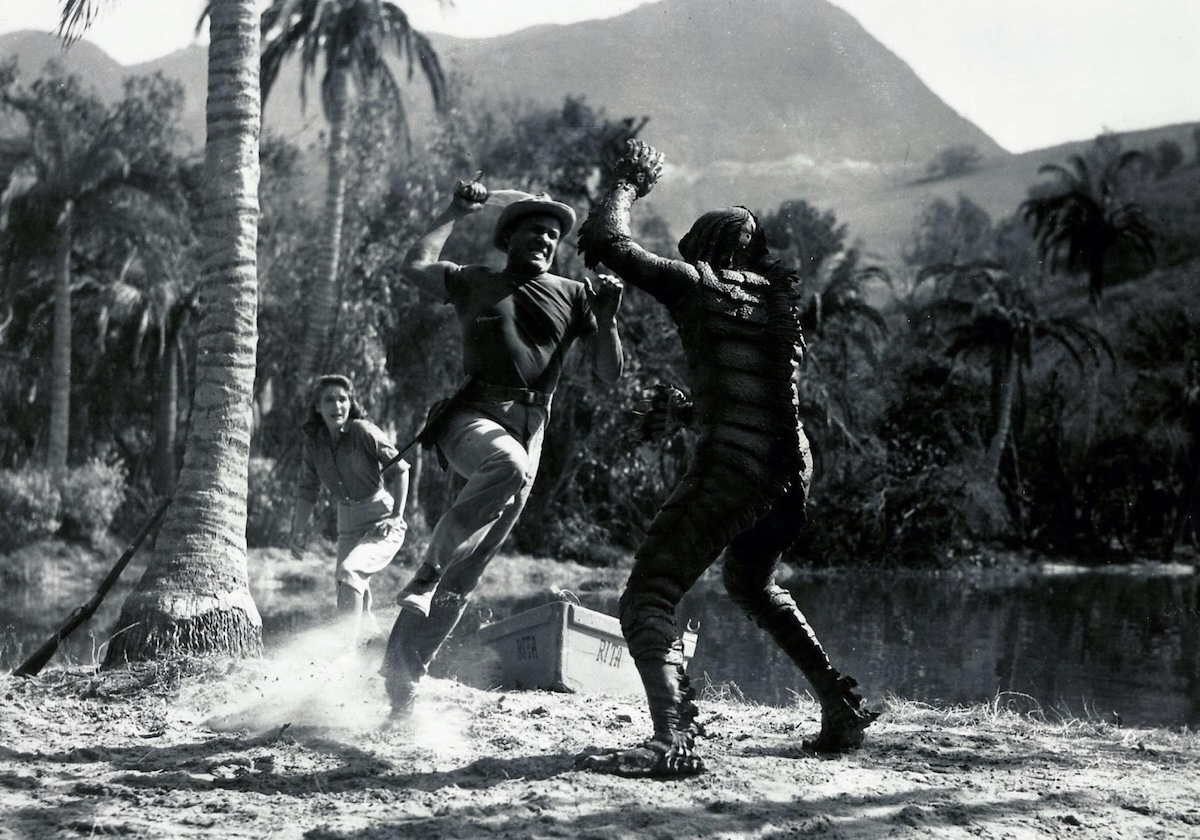
Del Toro addressed this by recognizing the colonialist echoes and revising his Amphibious Man as an Amazonian deity. His grace and strength were now entwined with a nobility that could be acknowledged and respected.
This neither undoes nor removes any of the staying power from Creature of the Black Lagoon. Rather it shows that the film and true star have been held to a higher standard than any old vampire or werewolf. How many of those never-seen attempts would have maintained the timely context and timeless elegance of the 1954 original?
Jack Arnold forwent the script’s original ending that confirmed the killing of the Creature with a suggestive submerging. This was to keep the door open for the sequel the next year. But it allowed audiences peace of mind that such a rare and extraordinary specimen remained alive in their imaginations. Not in the haunting sense that Dracula might once again arise from his grave but an assurance that this one-of-a-kind wonder may find true love one day.
Oppenheimer was left at the end of his film contemplating how much the world would change. A lifetime later and the Amazon has yet to be conquered, the beast is still out there, and Creature from the Black Lagoon retains its untouched legacy.
USA | 1954 | 80 MINUTES | BLACK & WHITE | ENGLISH • SPANISH

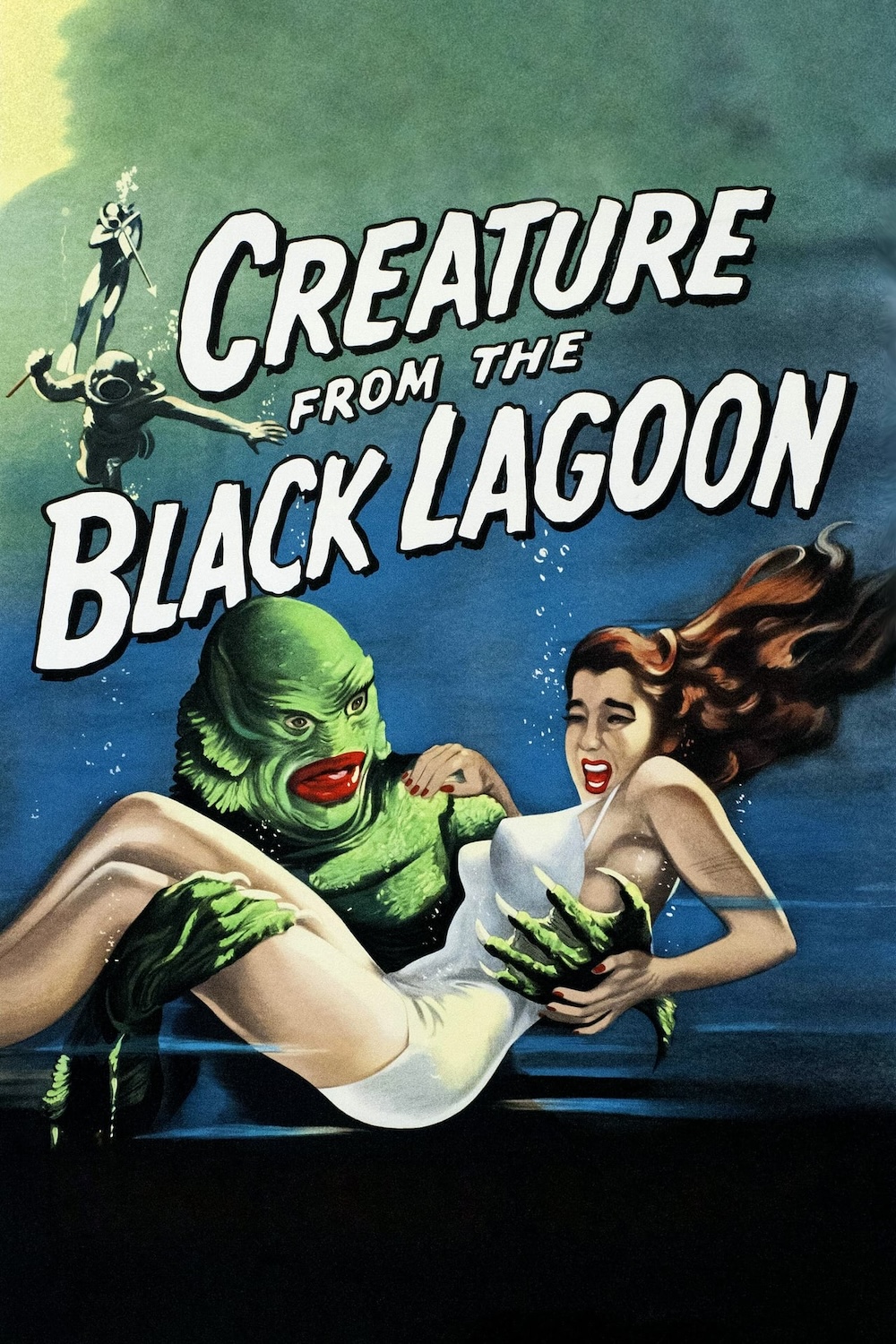
director: Jack Arnold.
writers: Harry Essex & Arthur Ross (story by Maurice Zimm).
starring: Richard Carlson, Julie Adams, Richard Denning, Antonio Moreno, Nestor Paiva, Whit Bissell, Ben Chapman & Ricou Browning.
